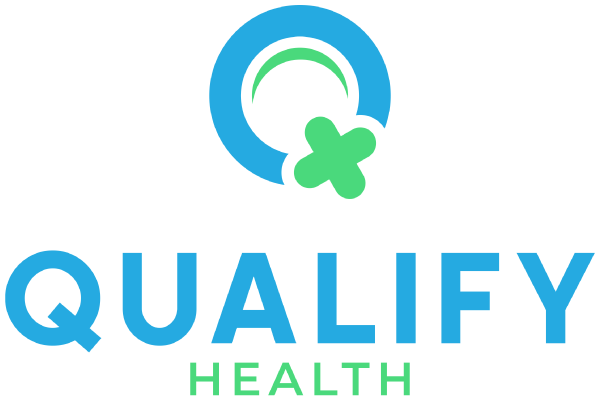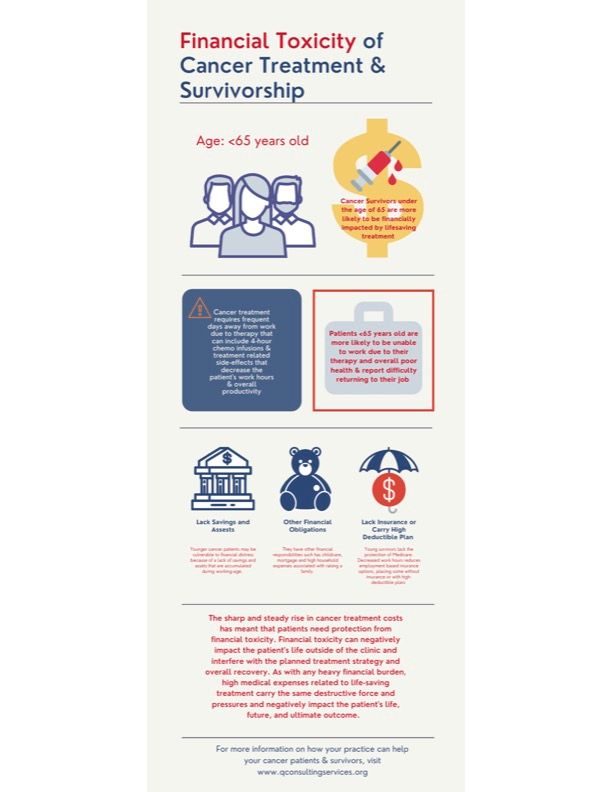A quick-reference guide for oncology practices to identify cancer patients at risk of financial toxicity.
Risk Factors for Cancer Patient Financial Toxicity
Financial toxicity is how the healthcare industry has come to define the financial hardship that patients experience due to their high out-of-pocket costs.
Age: Patients Who Are Less Than 65 Years of Age
Age is one of the biggest risk factors in determining the financial burden of treatment. Cancer patients that are less that 65 years old are more likely to be financially impacted by treatment than those who are 65 and older. Why?
1. <65 Years Old is Working Age
Cancer treatment requires frequent days away from work due to therapy. Chemotherapy infusion times can be as lengthy as 4 to 8 hours long. The patient also has to deal with the treatment-related side effects that decrease their work hours and overall productivity.
2. Lack Savings and Assets
Younger cancer patients are vulnerable to financial distress because of a lack of savings and assets that are accumulated during working-age
3. Other Financial Obligations
Cancer patients that are <65 years old have other financial responsibilities such as childcare, education, mortgage/rent, and high household expenses associated with raising a family.
4. Lack Insurance or Carry High-Deductible Plan
Younger cancer patients lack the protection of Medicare. Decreased work hours reduces employment based insurance options, placing some without insurance or with high-deductible plans.
How Your Practice Can Help Its Cancer Patients
At Q Consulting Support Services, we provide the strategy, workflows and technology needed to obtain a more comprehensive picture of the patient’s financial status and find solutions to their financial toxicity burden. Our successful system decreases the patient’s out-of-pocket responsibility and reduces bad medical debt through unconventional patient funding sources. We can fill in the gaps through patient financial advocacy, so patients feel taken care of physically and financially to drive up patient satisfaction scores.

